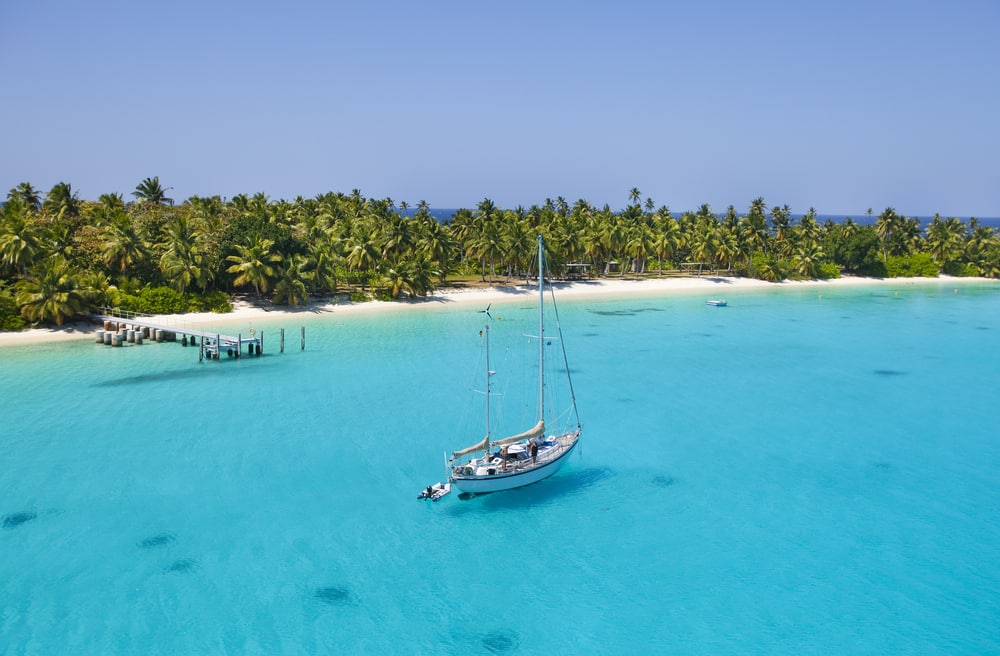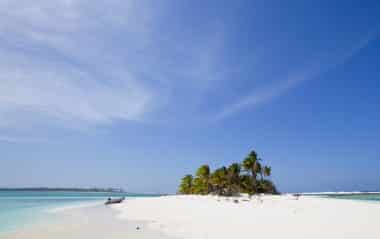
If you want to spend your holidays on the Cocos Islands, you should first familiarize yourself with the exact name of the archipelago that can be found in the Indian Ocean. In addition to being called the Cocos Islands, the archipelago is also known as the Keeling Islands. The Cocos Islands are a territory of Australia, although they are located 2,930 kilometers from the nearest Australian city of Perth.
The Cocos Islands are called Cocos Islands because the archipelago is known for its large population of coconut palms – it even bears their image on its flag. The islands belonging to the atoll have a total area of about 14 square kilometers. Furthermore, the Cocos Islands are extremely sparsely populated. Only about 550 inhabitants are spread over the 27 islands. If you are looking for peace and seclusion and are looking for fantastic beaches, this is the place for you. The average temperatures on the Cocos Islands are around 30 degrees all year round, which makes the islands a perfect swimming and diving destination.
How to travel to the Cocos Islands

Admittedly, the Cocos Islands are indeed not easy to reach. They are therefore not suitable for a short holiday from Europe, as the effort involved in the journey would simply be too high. But if you travel to Australia anyway, for example, it is worth taking a detour to the paradisiacal islands. The best way to start is from Australia. The Australian metropolis of Perth, which is located in the far west of the country and thus comparatively close to the Cocos Islands, is particularly suitable as a starting point. The flight time from Perth is approximately 4.5 hours. Direct flights are offered. The Cocos Islands Airport is located on its main island, West Island. From there, tourists can then take a boat to the other islands of the archipelago.
What you should consider when traveling to the Cocos Islands
A trip to the Cocos Islands is especially worthwhile for beach lovers and divers. Both will find the best conditions here. However, despite the pleasant temperatures all year round, it is best to arrive in the months of June to November. Outside of this period, there can be strong tropical cyclones on the Cocos Islands. In addition, there is an increase in long-lasting rainfall between December and April. There should be no problems with communication on the Cocos Islands. Since the islands are strongly oriented towards Australia, English is the official language of the archipelago. Payment is also made here with the Australian dollar. The climate is tropical, which means that the humidity on all the islands of the atoll is always very high. If you have health restrictions, you should have an informational meeting with your doctor before traveling to the Cocos Islands and check whether a stay in a tropical climate can be recommended.
The beaches of the Cocos Islands
One thing has to be said right at the beginning when talking about beach holidays on the Cocos Islands: Basically, it doesn’t matter which of the local beaches tourists would like to visit, after all, the Cocos Islands have nothing else to offer than dream beaches. Everywhere and on all associated islands, the beaches captivate with the very finest, almost white shimmering sand. In front of it stretches clear turquoise blue water whose temperature is always around 25 degrees. Of course, tall coconut palms can be expected everywhere. On the larger islands, the beaches are a little busier, but never overcrowded.
If you want to have a little infrastructure, it’s best to sunbathe here. In addition to sanitary facilities, there is often a café or a small beach bar, or hammocks and beach loungers to borrow. However, tourists who value these things should always find out in advance how well equipped the beach they are heading for. If you prefer solitude on the beach, you have several options to have a dream beach all to yourself. Long walks on the beach for two as well as experiencing romantic sunsets are very easy to do on the Cocos Islands.
Exciting diving adventures in the Cocos Islands
Whether snorkeler, beginner diver or diving professional: on the Cocos Islands, all friends of a colorful and natural underwater world will be happy. Especially in the northern part of the archipelago, one spectacular diving area follows the next. The areas that are located in the area of the Pulu-Keeling National Park are particularly recommended. Mammals are not to be found in Pulu-Keeling National Park. However, there are a wide variety of bird and turtle species to marvel at.
Furthermore, divers can discover no less than 99 different species of stony corals in the national park. Nine of them can only be found exclusively on the Cocos Islands. They do not occur anywhere else in the world. In addition, there are 528 different fish species, almost 500 underwater snail species and more than 100 different mussel species. Even the most experienced diver is guaranteed to be able to make one or two new discoveries here. Snorkelers also like to visit Direction Island, as they find the best snorkeling conditions in shallow water

